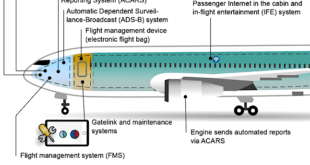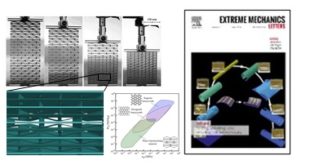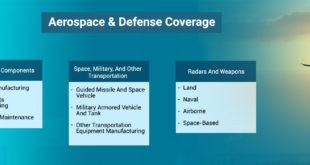Airplanes have revolutionized long-distance transportation allowing people to cross continents and oceans quickly, safely, and relatively cheaply. They have changed the meaning of warfare and were an important stepping stone into space. However, conventional aircraft require long runways for both take-off and landing are classified as CTOL ( Conventional Take-off or Landing).
Sometimes long runways aren’t available to use and there is a need for an aircraft to use short or no runways at all. Vertical take-off and landing VTOL technology means aircraft can theoretically take off and land almost anywhere, making them far more flexible. They’re also able to perform various manoeuvres not possible with a conventional plane; a significant advantage for aircraft in combat situations. What’s more, VTOL aircraft, such as drones, that use electric motors are more energy efficient than those using jet engines.
Runway independent aircraft (RIA)
Runway independent aircraft (RIA) are aircraft that are capable of taking off and landing without the need for a traditional runway, using techniques such as vertical takeoff and landing (VTOL) or short takeoff and landing (STOL).
Vertical takeoff and landing (VTOL) aircraft include fixed-wing aircraft that can hover, take off and land vertically, as well as helicopters and other aircraft with powered rotors, such as tiltrotors. The helicopter’s spinning rotors create thrust like a large propeller that is directed vertically, enabling it to lift off. While in flight, a slight tilt in the desired direction pushes some of the aircraft’s thrust and sends the craft forward.
For deeper understanding of STL/VTOL technology and applications please visit: Vertical Take-off and Landing (VTOL) Aviation: Soaring Beyond Horizons
The development and use of RIA pose several requirement challenges, including:
- Safety: RIA technology requires a high degree of safety due to the lack of runway infrastructure. This includes the development of reliable propulsion systems, advanced avionics, and collision avoidance systems.
- Efficiency: RIA must be efficient in terms of fuel consumption and performance to ensure their viability for commercial use. This involves designing aircraft with lightweight materials, advanced aerodynamics, and efficient power plants.
- Infrastructure: RIA require specific infrastructure such as landing pads, maintenance facilities, and navigation systems. These will need to be developed and maintained to support RIA operations.
- Regulatory frameworks: The development of RIA requires a regulatory framework that addresses safety, certification, and operational requirements. This will require the involvement of national and international regulatory agencies.
- Cost: RIA technology is still relatively new and developing the technology requires significant investment. The cost of producing RIA will need to be reduced to make it commercially viable.
- Noise: Some types of RIA, such as VTOL aircraft, can produce significant noise pollution. This can be a challenge in urban environments where noise restrictions are in place.
- Pilot training: Pilots will require specialized training to operate RIA due to the unique flight characteristics and technology involved.
Overall, the development and use of RIA pose several requirement challenges that must be addressed to ensure their safe and efficient operation. However, the potential benefits of RIA, such as increased mobility and reduced congestion, make it an area of significant interest and investment for the aviation industry.
DARPA SPRINT Program
DARPA announced an initiative called SPRINT (SPeed and Runway INdependent Technologies) in March 2023, inviting designers to develop aircraft that can fly fast and take off and land without the need for runways. The agency aims to have a demonstration flight within 42 months. SPRINT seeks to create an aircraft capable of cruising at 400 knots (460 mph), faster than Black Hawk helicopters but slower than an F-16 fighter jet. The aircraft should also be able to hover in austere environments like fields or deserts.
The SPRINT X-Plane project will seek to validate technologies and integrated concepts that can be scaled to different size military aircraft. “The objective of the SPRINT program is to design, build, certify, and fly an X-plane to demonstrate enabling technologies and integrated concepts necessary for a transformational combination of aircraft speed and runway independence for the next generation of air mobility platforms,” explained DARPA’s in an official press release.
Runway independent operations are envisioned as the ability to operate and hover near unprepared surfaces, such as sections of damaged runways, remote highways/roadways, unprepared fields with dry grass, parking lots, etc. Runway independent operations are transient operations not meant for continuous operations in one particular spot. Runway independent operations are still meant to be compatible with personnel operations from or near the aircraft. There is no disk loading, downwash or surface hardness limit set for the proposal.
Technical Objectives and Assumptions
The primary technical objectives of the SPRINT X-Plane Demonstrator are aimed at validating the underlying technologies and integrated concepts through flight demonstration:
- SPRINT X-Plane must demonstrate the ability to cruise ≥ 400 KTAS at a relevant altitude and perform basic forward flight maneuvers in a stable manner.
- SPRINT X-Plane must demonstrate the ability to hover and perform hover maneuvers in a stable manner.
- SPRINT X-Plane must demonstrate the ability to transition between hover, forward flight and high-speed forward flight modes in both directions in a stable manner.
The X-Plane will have the following attributes to assist with sizing and meeting technical objectives:
- Sustained flight speed ≥ 400 KTAS at an altitude between 15,000 and 30,000 feet
- Useful payload of ≥ 1000 lbs. in mainly a single dedicated space reserved for flight test instrumentation/avionics or residual capability
SPRINT X-Plane must demonstrate the ability to generate and distribute power in all modes of flight and during transition between these modes of flight
In addition to basic design and performance information the proposer will further highlight the capabilities of the technologies/integrated concept by discussing the following attributes:
- Short Take-off and Landing Capability – Describe ability to take-off and/or land in 300 feet, describe payload range effects or other relevant performance impacts.
- Runway Independent Operations in Austere Environments – Discuss impact of downwash/outwash and engine exhaust environment on operations in austere environments. Discussion should include vertical take-off, hover operations, personnel deployment from aircraft, personnel on the ground.
- Engine Out Operability – Describe advantages or disadvantages of fundamental technologies or integrated concept to land after a loss of power in a vertical mode of operation.
- Mission Applicability – Describe OS design’s ability to conduct infiltration/exfiltration, agile tactical airlift, and aeromedical evacuation missions from a cargo space viewpoint, (i.e., how do the fundamental technologies or integrated concept impact cargo space available).
- Aerial Refueling – Describe whether the fundamental technologies or integrated concept limit aerial refueling capability and efficiency.
- Maneuverability/Nap of the Earth Controllability – Describe advantages or disadvantages of the fundamental technologies or integrated concept ability to maneuver during slow or hover operations, vertical rate of climb or control during nap-of-the-earth operations (comparison to legacy platforms is useful).
Technologies validated by the X-plane testing can be scaled to different sized military aircraft, allowing them to cruise at over 400 knots and hover in harsh, unprepared spaces.
DARPA TTO is planning a 42-month contract to develop the SPRINT X-Plane demonstrator. The first six months will involve conceptual design and review as well as interface definition. It will be followed by simulation, component and subsystem testing, and planning the production and flight test.
The second phase of the project will cover construction, ground test and certification, and the third phase will involve validation in a flight environment.
Airworthiness certification of the X-Plane will occur in Phase 2; however, design and test planning considerations may be applicable to this BAA. Performers are expected to complete all safety/airworthiness reviews and obtain airworthiness certification prior to first flight
The Sprint Through Time: Timeline and Milestones for the DARPA X-Plane Project
The DARPA X-plane project, aptly named “Sprint,” follows a structured timeline with ambitious goals. Here’s a breakdown of the phases and where the competitors stand currently:
Phase 1A (Current Stage):
- Duration: October 2023 – September 2024
- Focus: Refining designs, conducting detailed technical analysis, and demonstrating feasibility through simulations and wind tunnel testing.
- Current Status: The four competitors are actively developing their X-plane concepts, showcasing their unique technologies and approaches.
- Milestones: Completing preliminary design reviews, validating performance predictions, and demonstrating technical viability for Phase 2 advancement.
Phase 2:
- Duration: Expected to start in October 2024 (tentative)
- Focus: Detailed design, manufacturing, and ground testing of prototype X-planes.
- Next Steps: For companies selected to move on, Phase 2 will involve intensive engineering, material procurement, and construction of functional prototypes.
- Milestones: Successful ground testing of prototypes and demonstration of key functionalities under controlled conditions.
Phase 3:
- Duration: Estimated between 2025 and 2027
- Focus: Flight testing and refinement of the X-planes.
- Potential Challenges: Transitioning from ground testing to actual flight presents immense challenges, requiring thorough risk mitigation and flight performance monitoring.
- Milestones: Achieving controlled first flights, progressively pushing performance boundaries through test flights, and ultimately demonstrating operational capabilities in relevant scenarios.
Beyond Phase 3:
- The ultimate goal is to transition the most successful X-plane design into a full-fledged military platform, potentially leading to production and deployment.
Challenges and Uncertainties:
- Each phase is fraught with technical hurdles, from material limitations to complex propulsion systems and integration challenges.
- Budgetary constraints and unforeseen technical hiccups are additional factors that could impact the timeline and ultimately, the success of the program.
The DARPA X-Plane Showdown: Four Contenders for High-Speed Flight
The Defense Advanced Research Projects Agency (DARPA) has thrown down the gauntlet with its “Sprint” program, aiming to revolutionize aerial warfare with high-speed vertical take-off and landing (VTOL) X-planes. Four fierce competitors stand ready to push the boundaries of flight:
1. Bell Textron:
- Design: Fan-in-wing concept with embedded engines and moderate sweep. Leverages their V-22 Osprey expertise for vertical flight, and Boeing’s X-48 BWB knowledge for high-speed cruise.
- Unique Features: Integrated lift fans linked to engines for efficient hovering, potentially enabling closed-cycle cooling for engine thrust in hot environments.
2. Aurora Flight Sciences (Boeing subsidiary):
- Design: Blended-wing-body (BWB) with embedded engines and fan pods for vertical lift. Emphasizes aerodynamic efficiency and fuel savings for long-range missions.
- Unique Features: Variable-geometry fan nozzles for optimal thrust management during hover and transition phases. Lightweight composite materials for superior maneuverability.
3. Northrop Grumman:
- Design: Likely a hybrid combining elements of existing aircraft like the F-35 stealth fighter and V-22 Osprey. Remains the most secretive contender.
- Unique Features: Potential focus on advanced sensors and networked communication capabilities for integrated battlefield operations.
- Technical Aspects: Speculation surrounds potential use of directed-energy weapons or hypersonic technologies, but details remain under wraps.
4. Piasecki Aircraft:
- Design: Rumored to be a tiltrotor configuration with innovative rotor systems for enhanced speed and stability. Leverages their extensive experience in helicopter design.
- Unique Features: Possibility of incorporating active or passive blade control for improved noise reduction and vibration damping.
- Technical Aspects: Details about Piasecki’s approach are limited, but their focus on low-noise, high-performance VTOL solutions could be a differentiator.
Comparing the Contenders:
- Propulsion: Bell and Aurora rely on embedded engines, while Northrop Grumman might use separate engines for vertical and horizontal thrust. Piasecki sticks to traditional rotorcraft technology.
- Aerodynamics: Aurora and Northrop Grumman prioritize BWB efficiency for long-range, while Bell and Piasecki focus on maneuverability and hover performance.
- Materials: All are likely to utilize advanced composites for weight reduction and performance optimization.
The Race is On:
Each competitor brings unique strengths and technologies to the table. Ultimately, the X-plane that best balances high-speed cruise, efficient hovering, and stealthy operation will have the edge in this high-stakes competition. As Phase 1A progresses, expect more technical details to emerge, further sharpening the picture of the future of military aviation.
 International Defense Security & Technology Your trusted Source for News, Research and Analysis
International Defense Security & Technology Your trusted Source for News, Research and Analysis


